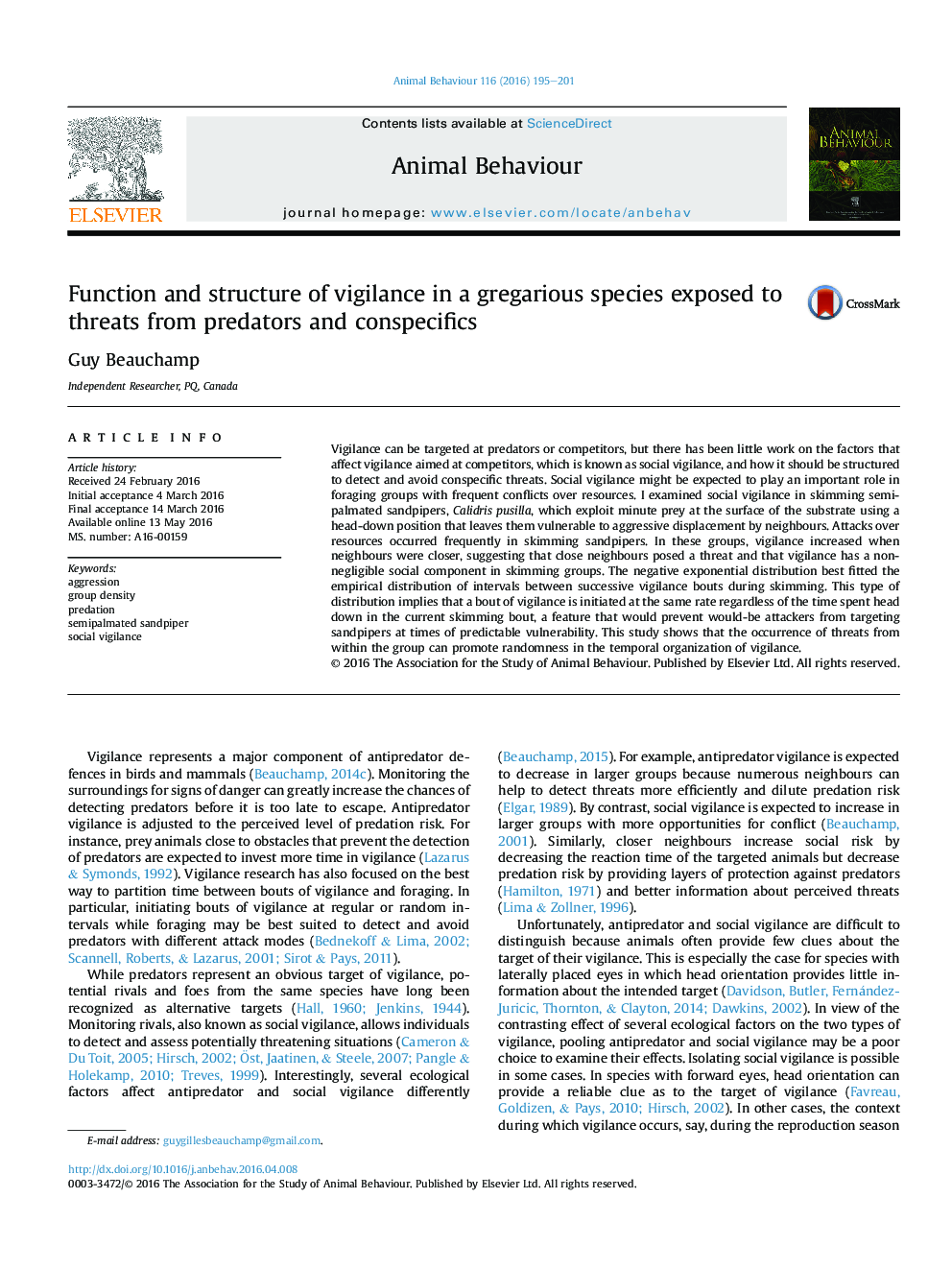| Article ID | Journal | Published Year | Pages | File Type |
|---|---|---|---|---|
| 8489036 | Animal Behaviour | 2016 | 7 Pages |
Abstract
Vigilance can be targeted at predators or competitors, but there has been little work on the factors that affect vigilance aimed at competitors, which is known as social vigilance, and how it should be structured to detect and avoid conspecific threats. Social vigilance might be expected to play an important role in foraging groups with frequent conflicts over resources. I examined social vigilance in skimming semipalmated sandpipers, Calidris pusilla, which exploit minute prey at the surface of the substrate using a head-down position that leaves them vulnerable to aggressive displacement by neighbours. Attacks over resources occurred frequently in skimming sandpipers. In these groups, vigilance increased when neighbours were closer, suggesting that close neighbours posed a threat and that vigilance has a non-negligible social component in skimming groups. The negative exponential distribution best fitted the empirical distribution of intervals between successive vigilance bouts during skimming. This type of distribution implies that a bout of vigilance is initiated at the same rate regardless of the time spent head down in the current skimming bout, a feature that would prevent would-be attackers from targeting sandpipers at times of predictable vulnerability. This study shows that the occurrence of threats from within the group can promote randomness in the temporal organization of vigilance.
Related Topics
Life Sciences
Agricultural and Biological Sciences
Animal Science and Zoology
Authors
Guy Beauchamp,
